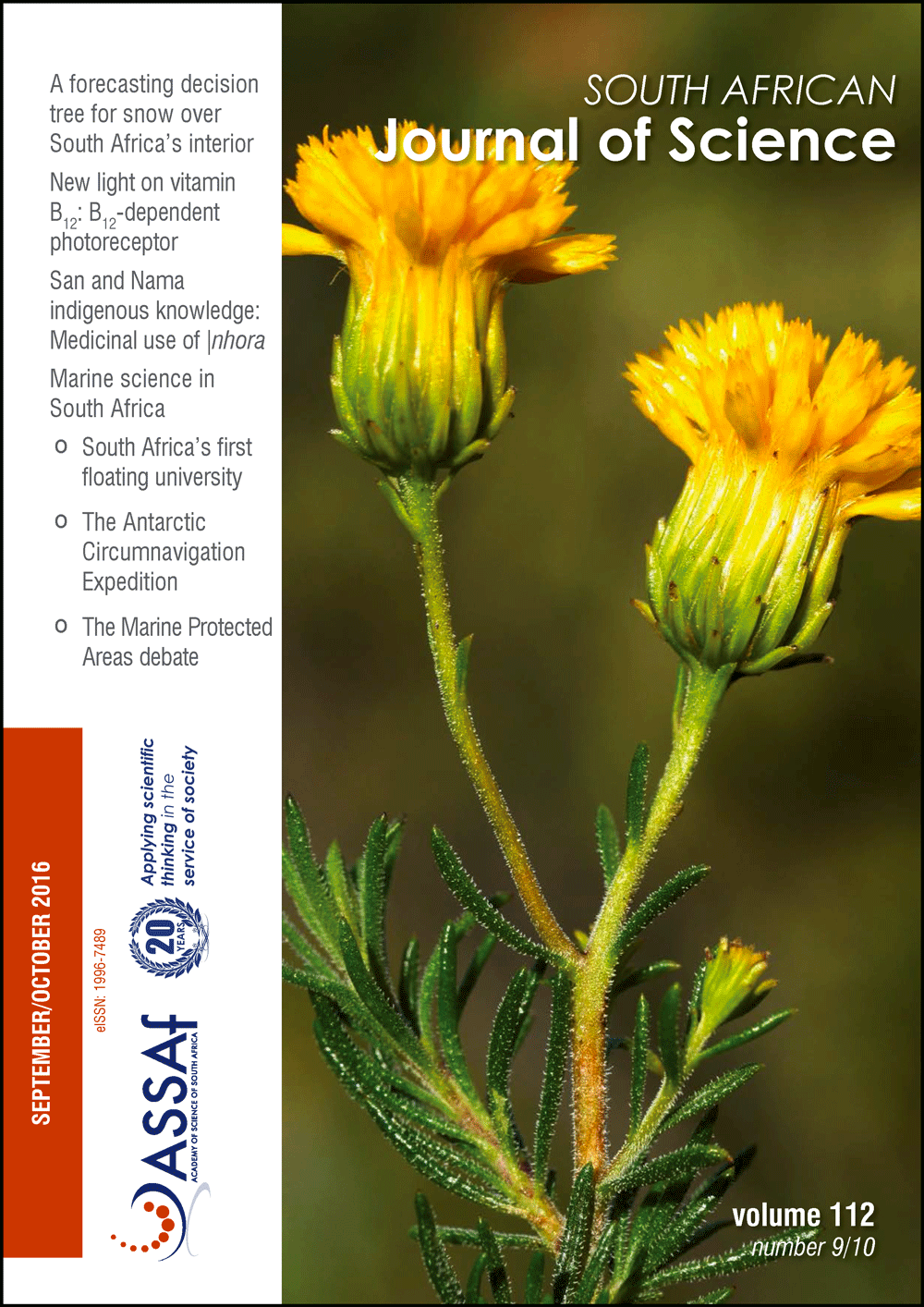A snow forecasting decision tree for significant snowfall over the interior of South Africa
DOI:
https://doi.org/10.17159/sajs.2016/20150221Keywords:
ridging surface high, geopotential thickness, cut-off low, deposition, relative humidityAbstract
Snowfall occurs every winter over the mountains of South Africa but is rare over the highly populated metropolises over the interior of South Africa. When snowfall does occur over highly populated areas, it causes widespread disruption to infrastructure and even loss of life. Because of the rarity of snow over the interior of South Africa, inexperienced weather forecasters often miss these events. We propose a five-step snow forecasting decision tree in which all five criteria must be met to forecast snowfall. The decision tree comprises physical attributes that are necessary for snowfall to occur. The first step recognises the synoptic circulation patterns associated with snow and the second step detects whether precipitation is likely in an area. The remaining steps all deal with identifying the presence of a snowflake in a cloud and determining that the snowflake will not melt on the way to the ground. The decision tree is especially useful to forecast the very rare snow events that develop from relatively dry and warmer surface conditions. We propose operational implementation of the decision tree in the weather forecasting offices of South Africa, as it is foreseen that this approach could significantly contribute to accurately forecasting snow over the interior of South Africa.
Significance:- A method for forecasting disruptive snowfall is provided. It is envisaged that this method will contribute to the improved forecasting of these severe weather events over South Africa.
- Weather systems responsible for snowfall are documented and the cloud microphysical aspects important for the growth and melting of a snowflake are discussed.
- Forecasting methods are proposed for the very rare events when snow occurs over the interior of South Africa when the air is relatively dry and somewhat warmer.
Published
Issue
Section
License

All articles are published under a Creative Commons Attribution 4.0 International Licence
Copyright is retained by the authors. Readers are welcome to reproduce, share and adapt the content without permission provided the source is attributed.
Disclaimer: The publisher and editors accept no responsibility for statements made by the authors
How to Cite
- Abstract 850
- PDF 997
- EPUB 190
- XML 314












.png)